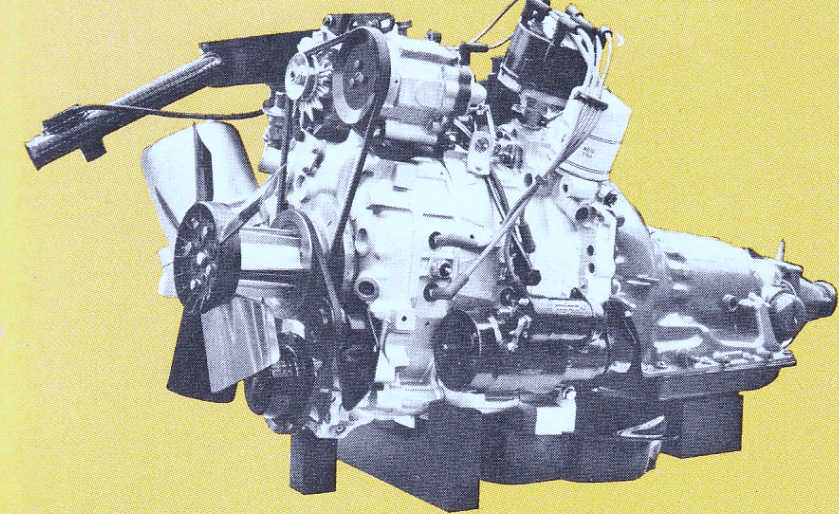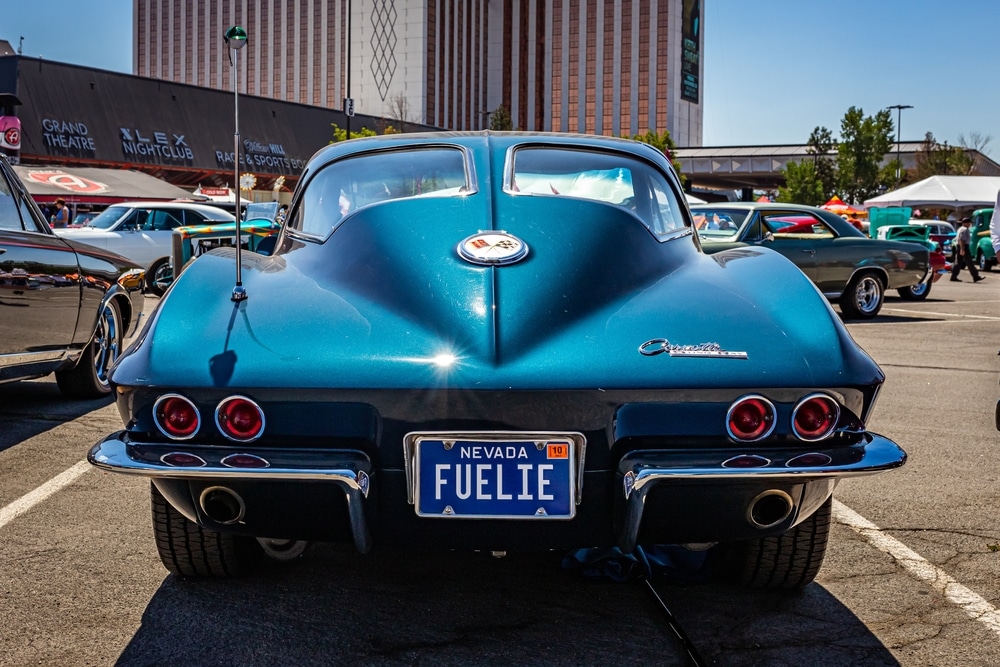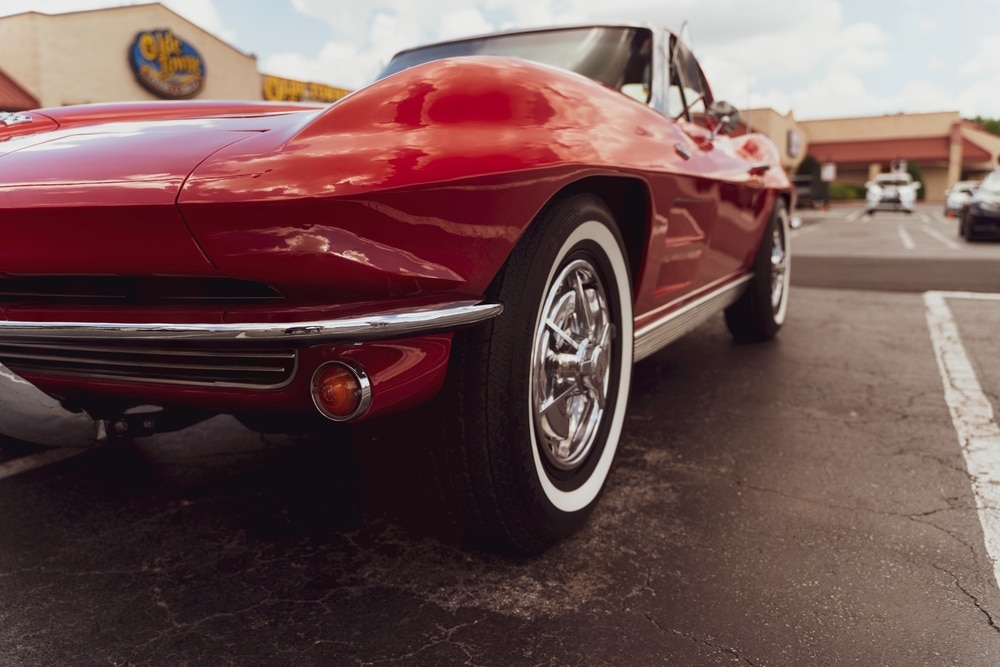If you’re tinkering with a Small Block Chevy (SBC) engine, you’ll want to get cozy with its firing order.
It’s like the heartbeat of your engine, keeping everything running smooth as silk.
The SBC firing order is 1-8-4-3-6-5-7-2, a sequence that’s music to the ears of any gearhead worth their salt.

You might be wondering why this particular order matters. Well, it’s all about balance, power, and efficiency.
Get it right, and your engine purrs like a kitten. Get it wrong, and you’re in for a world of trouble.
The correct firing order ensures each cylinder fires at just the right moment, creating that sweet symphony of internal combustion we all love.
Whether you’re rebuilding an old classic or tuning up your daily driver, understanding the SBC firing order is crucial.
It’s not just about connecting wires; it’s about unleashing the full potential of your Chevy powerplant.
So roll up those sleeves and get ready to dive into the world of SBC distributor setups and cylinder numbering.
Your engine will thank you for it!
Key Takeaways
- The SBC firing order (1-8-4-3-6-5-7-2) is essential for optimal engine performance
- Proper wire routing on the distributor cap ensures smooth operation and power delivery
- Regular maintenance and correct firing order setup can prevent common SBC engine issues
Understanding the Small Block Chevy
Hey there, gear head! Let’s talk about the legendary Small Block Chevy engine. This powerhouse has been the heart of countless hot rods and muscle cars since its debut in 1955.
You might know it by some of its famous displacements: the 283, 327, and the iconic 350. These V8 engines pack a serious punch in a compact package.
What makes the Small Block so special? Well, it’s like the Swiss Army knife of engines.
You can find it in everything from family sedans to race cars. Its versatility is unmatched!
Here’s a quick rundown of some popular Small Block variants:
- 283: The original hot rod favorite
- 302: Perfect for Trans Am racing
- 327: A balance of power and efficiency
- 350: The most famous of them all
- 400: Big block power in a small block package
You’ll love how easy these engines are to work on.
With a bit of elbow grease and some basic tools, you can turn your Small Block into a fire-breathing monster.
Whether you’re cruising in a Chevrolet with a stock 283 or tearing up the strip with a built 327, you’re part of a proud tradition.
The Small Block Chevy isn’t just an engine – it’s a piece of automotive history!
The SBC Firing Order 101

Buckle up, gearheads! We’re about to dive into the heart of your Chevy’s small-block engine. The firing order is like your engine’s secret handshake – get it right, and you’re in for a smooth ride.
Breaking Down the Firing Order
You’ve probably heard the magic numbers: 1-8-4-3-6-5-7-2. That’s your SBC firing order, and it’s not just a random sequence. It’s the precise order your cylinders fire to keep your engine purring like a kitten.
Think of your engine as a mini fireworks show. Each cylinder is a rocket, and the firing order is your choreography. Get it wrong, and you’ll have a mess on your hands!
Your cylinder numbers are arranged like this:
- Left bank (driver’s side): 2, 4, 6, 8
- Right bank (passenger’s side): 1, 3, 5, 7
Remember, “left” is when you’re facing the engine from the front. Don’t get it backwards, or you’ll be scratching your head for hours!
Ignition System Details
Now, let’s talk about getting that spark to the right place at the right time. Your distributor cap is the star of this show.
It’s like a carousel, spinning around and sending jolts of electricity to each cylinder.
Your distributor rotates clockwise – just like a clock. But unlike a clock, it’s not marking hours, it’s firing cylinders. Each time it makes a full rotation, you’ve gone through all eight cylinders.
The spark plug wires are your messengers, carrying that electric love from the distributor to each cylinder. Get these in the wrong order, and your engine will sound like it’s trying to cough up a lung!
HEI Systems Explained

HEI stands for High Energy Ignition, and it’s a game-changer for your SBC.
Think of it as upgrading from a matchstick to a blowtorch – more spark, more power, more fun!
Your HEI distributor is like the all-in-one package deal of the ignition world.
It’s got the coil built right in, which means less wiring for you to mess up. Plus, it delivers a hotter spark, which means better combustion and more power.
With HEI, you’ll find your engine starts easier, runs smoother, and has more pep in its step.
It’s like giving your SBC a double espresso shot!
Remember, when you’re working with HEI, always set your timing at idle. If you try to do it at high RPMs, you might end up with a timing that’s as off as a politician’s promises!
Performance Tuning SBC Engines
Hey there, gearhead! Ready to squeeze some extra ponies out of your Small Block Chevy?
Let’s dive into the world of performance tuning and make that SBC roar!
First things first, let’s talk compression. Bumping up your compression ratio can give you a nice boost in horsepower and torque. Just remember, higher compression means higher octane fuel!
Next up, the heart of your engine – the camshaft.
Swapping in a hotter cam can really wake up your SBC. But be careful, too aggressive and you’ll lose that smooth idle your better half loves.
Don’t forget about those spark plugs! Upgrading to a set of performance plugs can improve your ignition and help you burn fuel more efficiently.
And while you’re at it, why not throw in a High Energy Ignition (HEI) system? It’s like giving your SBC a shot of espresso!
Now, let’s talk breathing. Opening up your intake and exhaust can help your engine gulp down more air and expel those gases faster.
It’s like giving your SBC a pair of runner’s lungs!
Here’s a quick hit list of other tweaks to consider:
- Larger bore and stroke
- Higher flow fuel injectors
- Performance headers
- Upgraded cooling system
Remember, tuning is all about balance.
You want to improve performance without sacrificing reliability. And always follow the proper torque sequences when reassembling your engine.
Nobody likes a loose bolt rattling around in there!
Troubleshooting Tips for SBC Mishaps
Got a Small Block Chevy that’s acting up? Don’t worry, you’re not alone! Let’s dive into some common issues and how to fix ’em.
First things first, if you’re hearing that dreaded misfire, check your spark plug wires. They might be playing musical chairs on you.
Make sure they’re connected to the right cylinders, following that 1-8-4-3-6-5-7-2 firing order.
Is your Chevy 350 engine coughing and sputtering? Time to play detective with your ignition system.
Check if your distributor cap is wearing a party hat of corrosion. Clean it up, and you might just be back in business.
Now, let’s talk about timing.
If your engine’s timing is off, it’s like trying to dance with two left feet. Get yourself a timing light and make sure you’re hitting that sweet spot at top dead center (TDC).
Here’s a quick checklist for you:
- Check spark plug condition
- Inspect distributor cap and rotor
- Verify correct firing order
- Test for proper fuel pressure
- Ensure vacuum lines are intact
Remember, a happy SBC is a well-tuned SBC. Keep these tips in your back pocket, and you’ll be cruising down the road in no time!
SBC Engine Specs and Maintenance
Hey there, gearhead! Let’s talk about those small block Chevy engines that have been turning wrenches and hearts for decades. You know, the ones that make your neighbors jealous when you pop the hood.
The Chevy 350 is the crown jewel of SBC engines. This bad boy has been purring in everything from muscle cars to pickup trucks since the 60s.
It’s got a firing order of 1-8-4-3-6-5-7-2, which is music to any mechanic’s ears.
Now, let’s get down to the nitty-gritty. Here are some key specs to keep in mind:
- Displacement: 350 cubic inches (5.7 liters)
- Bore x Stroke: 4.00″ x 3.48″
- Compression Ratio: 8.5:1 to 10.5:1 (depending on the year)
When it comes to maintenance, you’ll want to keep an eye on those torque specs. Overtightening can lead to a world of hurt, my friend.
For the main bearings, you’re looking at about 65 ft-lbs. Head bolts? Around 65 ft-lbs too.
Don’t forget about that crankshaft! It’s the heart of your engine, after all.
Keep it clean and well-lubricated, and it’ll thank you with years of faithful service.
And remember, a happy crankshaft means a happy engine.
Regular oil changes are your SBC’s best friend. Stick to the 3,000-mile rule, and you’ll be cruising for years to come.
And while you’re at it, give those spark plugs a once-over every now and then. They’re the unsung heroes of your engine’s performance.
Frequently Asked Questions
Understanding the intricacies of SBC firing orders can be a bit tricky. Let’s tackle some common questions to help you become a small block Chevy expert.
What does HEI stand for in the context of ignition systems, and how does it alter the SBC firing order?
HEI stands for High Energy Ignition. It’s like giving your SBC a shot of espresso!
This system doesn’t change the firing order, but it does pack more punch. You’ll get a stronger spark and better performance, especially at higher RPMs.
Can you explain the difference between the standard and 4-7 swap firing orders for small block Chevys?
The standard SBC firing order is 1-8-4-3-6-5-7-2.
The 4-7 swap, as you might guess, swaps cylinders 4 and 7. This little trick can help balance out the engine’s vibrations. It’s like teaching your V8 to do a smooth waltz instead of the twist!
How does the firing order for an old-school Chevy 350 compare to that of a modern LS engine?
Good news, gearheads! The firing order for your classic 350 and the modern LS is the same.
It’s like your grandpa’s dance moves – they never go out of style. Both use the 1-8-4-3-6-5-7-2 sequence.
Does the firing order for a TBI system differ from that of a carbureted SBC?
Nope, your TBI (Throttle Body Injection) SBC keeps the same firing order as its carbureted cousins.
It’s like putting your engine in a fancy new suit – it might look different, but the dance steps are the same.
What adjustments to the firing order might I look at for optimizing performance in a SBC 400?
The SBC 400 typically sticks with the standard firing order. But if you’re chasing more power, you might consider the 4-7 swap we talked about earlier.
It’s like giving your engine a tune-up and a massage at the same time!
Is there a simple way to remember the firing sequence when installing a new distributor on a 5.7 350?
You bet! Think of the distributor cap as a clock.
Start at 5 o’clock and go clockwise: 5-7-6-8-2-4-1-3.
It’s like playing “Duck Duck Goose” with your cylinders.
Just remember, cylinder 1 is at 5 o’clock, not 12!
